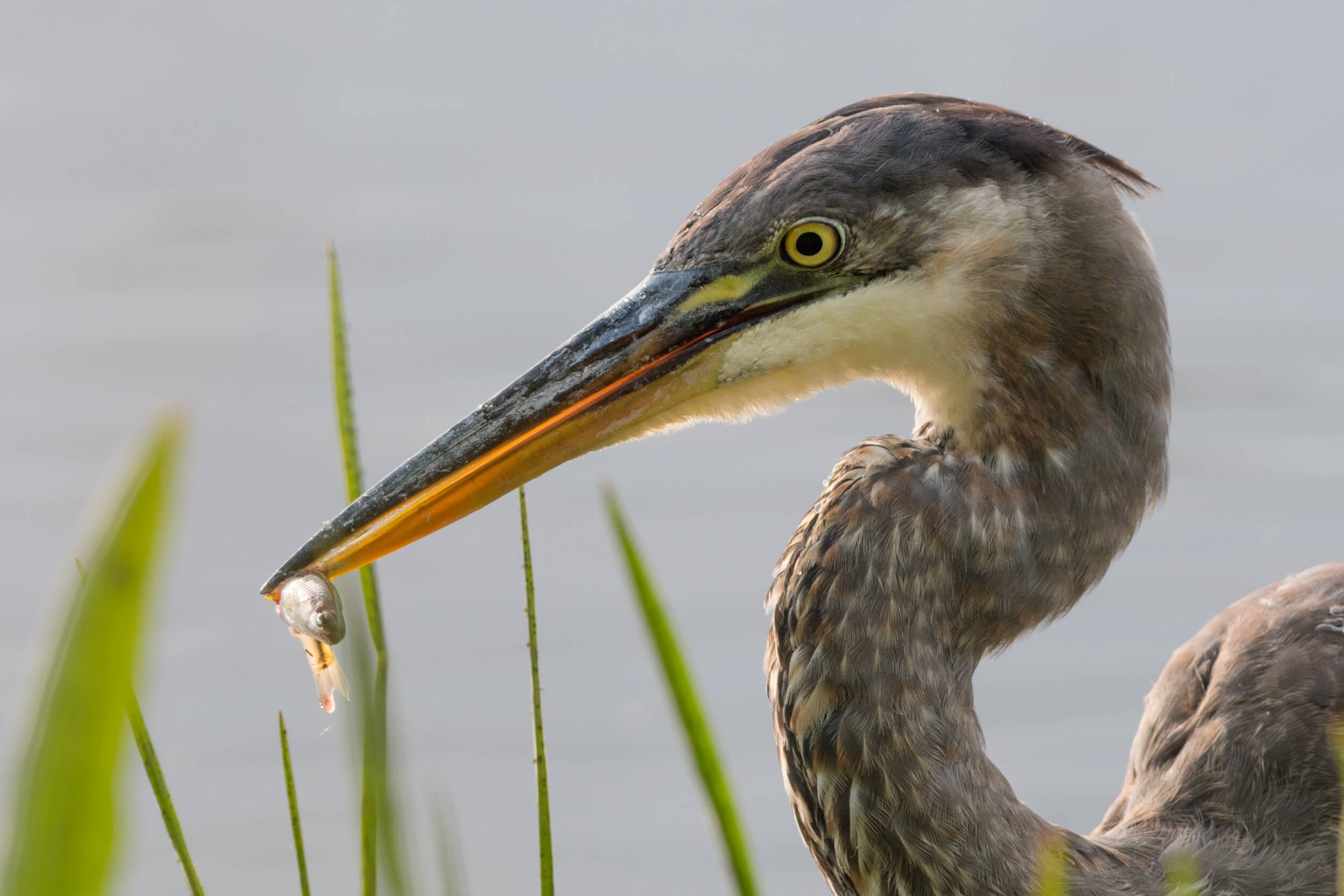What do great blue herons eat? 8 amazing facts about these beautiful birds
What do great blue herons eat? What is the wingspan of a great blue heron? What sound does a great blue heron make?
If you’re curious about the answer to any of these questions and more, you won’t want to miss this article.
Enjoy learning 8 amazing facts about great blue herons!
Are you interested in wildlife photography and great blue herons?
If so, you won’t want to miss my recent article, How to Photograph Great Blue Herons: 7 Tips to Take Your Wildlife Photography to the Next Level.
In this guide, I’ll give you 7 tips to help you learn and improve how you photography these majestic birds.
Great blue heron | Nikon D500 + 200-500 mm f/5.6 + 1.4x TC | ISO 320, 1/500, f/8 @ 280 mm
1) What do great blue herons eat?
Great blue herons’ main prey are fish, but they are opportunistic predators that will also eat amphibians, reptiles, insects, rodents, and even other birds. Their preferred method of hunting is standing still or striding slowly in shallow water. Once fish approach them, they use an incredibly fast, powerful strike of their beak to spear their prey.
Great blue heron | Nikon D500 + 300 mm f/2.8 VR II + 1.4x TC | ISO 360, 1/4000, f/4 @ 420 mm
2) What is the wingspan of a great blue heron?
Apart from being between 91 to 137 cm (3.2 to 4.5 feet) in body length, the great blue heron has a wingspan of between 167 to 201 cm (5.5 to 6.6 feet).
Great blue heron | Nikon D500 + 200-500 mm f/5.6 | ISO 720, 1/1000, f/5.6 @ 270 mm
3) What sound does a great blue heron make?
According to All About Birds, great blue herons make various sounds (i.e. a greeting to their partner when they return to the nest, alarm calls, etc.), but are most vocal in and around their nest.
If you would like to hear more of the sounds of great blue herons, check out All About Birds.
Great blue heron | Nikon D700 + 300 mm f/2.8 VR II + 1.4x TC | ISO 2000, 1/500, f/4 @ 420 mm
4) Where do great blue herons live?
Great blue herons live throughout most North, Central, and northern South America.
These birds are incredibly adapted to almost any aquatic habitat, including rivers, lakes, saltwater marshes, and mangrove swamps. Great blue herons often build their nests in trees or bushes near water.
Great blue heron | Nikon D4 + 300 mm f/2.8 VR II + 1.4x TC | ISO 320, 1/500, f/4 @ 420 mm
5) Do great blue herons migrate?
In the northern parts of their range in Canada and the United States East of the Rocky Mountains, great blue herons migrate “and winter in coastal areas of the Southern United States, Central America, or northern South America.” On the other hand, “populations along the Pacific Coast may be permanent residents, even as far north as southeastern Alaska,” according to Audubon.
Great blue heron | Nikon D500 + 300 mm f/2.8 VR II | ISO 1800, 1/550, f/2.8
6) Does the great blue heron have any predators?
Adult herons have few natural predators due to their size. However, some birds of prey, such as bald eagles and great horned owls, prey on both juveniles and adults.
In southern regions, American alligators and crocodiles can occasionally take an adult great blue heron.
Predators of great blue heron eggs and nestlings include turkey vultures, common ravens, American crows, red-tailed hawks, American black bears, and raccoons.
Great blue heron | Nikon D700 + 300 PF + 1.4x TC | ISO 900, 1/500, f/5.6 @ 420 mm
7) How much does a great blue heron weigh?
Despite being the largest heron in North America, an adult great blue heron weighs between 4.0–7.9 lbs (1.82–3.6 kg) due to their lightweight bones.
Great blue heron and nestlings | Nikon D4 + 200-500 mm f/5.6 | ISO 560, 1/500, f/5.6 @ 200 mm
8) How many eggs does a great blue heron lay?
Great blue herons usually lay 3-5 eggs. Both parents incubate for about 25-30 days. After the chicks hatch, male and female feed the young. The offspring fledge after about 60 days and leave the nest within the following 30 days.
Where to buy
If you are interested in purchasing any of the gear I used to shoot these photos, check out the links below:
If you live in Canada, Kijiji is a great place to get even cheaper gear if you are willing to buy cameras and lenses without an intermediary service, such as Amazon or eBay.









